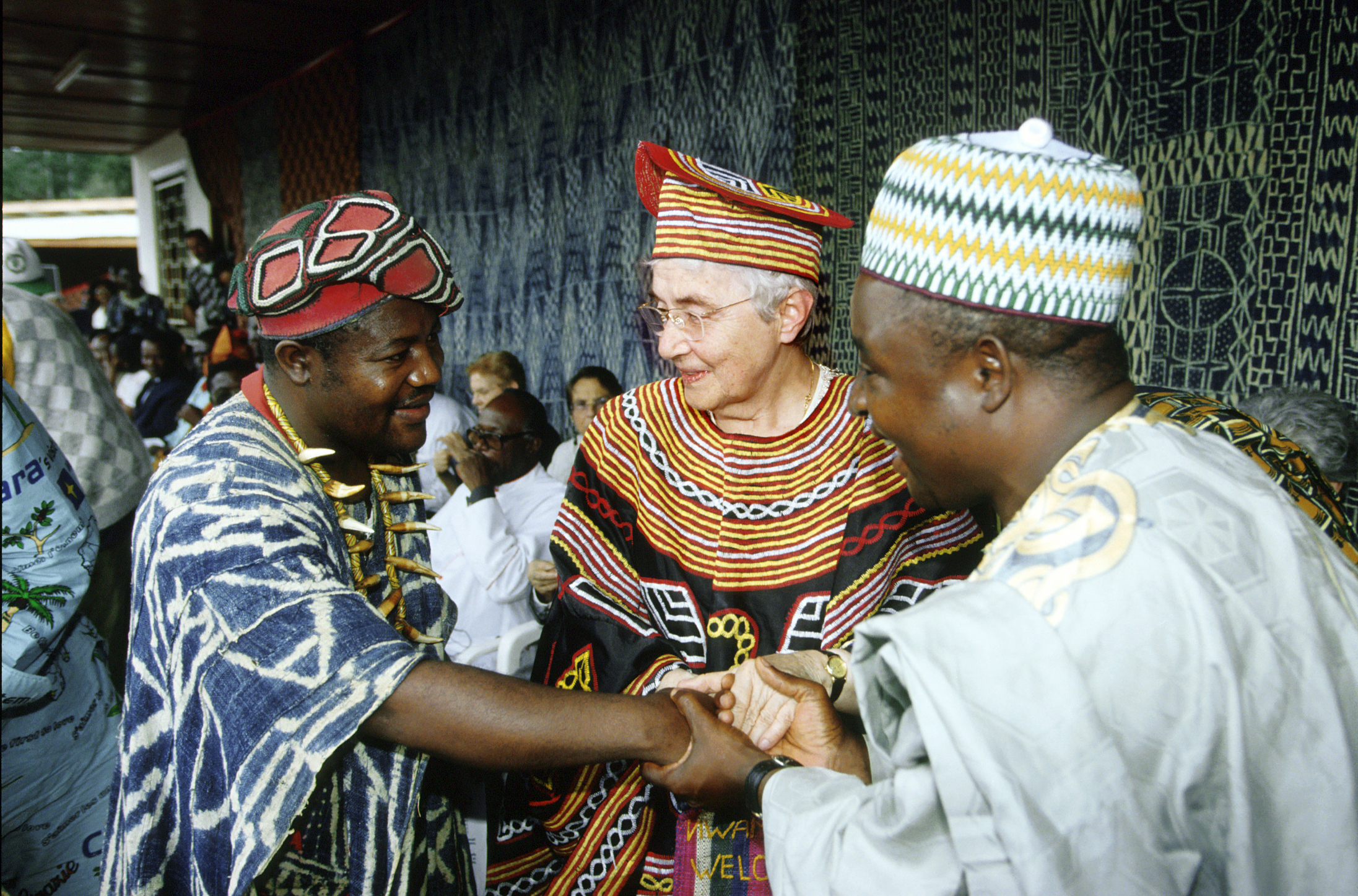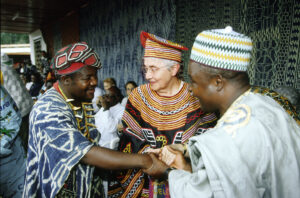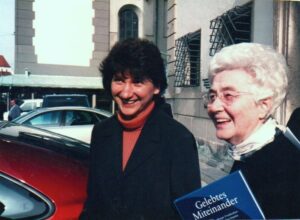
Chiara Lubich (1920 – 2008) and the Charism of Unity: A life-changing proclamation
Chiara Lubich, an extraordinary woman who brought disruptive novelty to the 20th century church
Much has been written about her. These lines are meant to be my personal testimony of the fruitfulness of the proclamation that Chiara addressed to millions of people, changing their lives.
I am an Italian focolarina and I have lived in Kenya since 2021 in the Mariapolis Piero, one of the three citadels of the Focolare Movement on the African continent. The first of these was Fontem, in the heart of the Cameroon forest, where in 1964 a group of medical focolarini gave witness to evangelical love. Called by the Catholic bishop to care for the Bangwa people afflicted by sleeping sickness and a serious infant mortality rate, they built a hospital with specialised wards and operating theatres, a college for the education of children and young people, and a power station. They thus revived the life of the village and the neighbouring villages and renewed relations between the inhabitants in the spirit of Christian love. A “miracle” occurred in the heart of the forest that led this people and several others to set out on the path of Christian faith and fraternity.
As at Fontem, embodying the words of Jesus in the local culture and life is the spirit that animates the activities and places of coexistence of the Focolare Movement or Work of Mary, not only in Africa but around the world, in 182 countries on five continents. The members and adherents are inspired by the life of the early Christians, forming communities renewed by the Gospel and building fraternal relationships between Catholics, Christians of various denominations, those belonging to different religions and those who, even without any religious reference, want to contribute to the protection of universal values such as peace, justice and the protection of nature. An ecclesial movement that is bent on contributing to the realisation of universal unity and fraternity, the dream of Jesus, His testament expressed in the prayer addressed to the Father: ‘May they all be one! As you Father are in me and I in you, may they also be in us one.” (Jn 17:20-21)
But what was the spark that inspired all this? I met Chiara Lubich, founder of the Focolare Movement, at the beginning of my university studies. A woman in love with God who knew how to transmit her passion for a more united and fraternal world to legions of people, young and old, lay and consecrated, of all cultures and social backgrounds. Clare bore witness to God with her life, her wisdom and humility and her concrete love for each neighbour whom she welcomed as if they were the only person in the world. She knew how to get the best out of each person, inspiring so many to spend their lives well to be a gift for today’s humanity, afflicted by many injustices and challenges, but at the same time longing for peace, solidarity and shared joy.
Chiara was born in Trent in 1920. At the age of 23, she consecrated her life to God: this was the event behind the birth and flourishing of this vast ecclesial movement. In the devastating destruction of the Second World War, Chiara sees how everything collapses and is ‘vanity of vanities’. A question arises spontaneously in her heart: “But is there an Ideal that no bomb can destroy?” The answer is luminous and inspiring: “Yes there is: it is God. To Him she wants to consecrate her life. This is how she comments on that experience that changed her story and that of many others: ‘My inner joy cannot be described. I had the impression: “I married God, I married God.” And I said: What can possibly happen? I expect everything, because I have married God.”[1] Chiara always recognised God’s guidance, action, protection and providence in every development of the Movement.
Chiara’s experience is among those that opened up new perspectives in the Church of the 20th century. The Work of Mary was born 20 years before the Second Vatican Council. Together with other impulses that arose from the fervour of the laity, it prepared and directed the way and then implemented the historical turning point announced in it. The presence and distinctiveness of the mission of the laity in the Catholic Church is one of the central aspects on which the Second Vatican Council spoke words of novelty, opening a new ecclesial springtime marked by movements, communities and lay associations that represent the Marian profile in the Church. From the life of union and prayer with God, the certainty was born in Chiara that the Work of Mary should be in the world a presence and continuation of Mary, seen as a model for the laity, who realised the Incarnation and brought Jesus into history and into all human dimensions.
On 27 January 2015, Chiara Lubich’s cause for beatification opened. She indicated a path of holiness open to all. She makes us understand that holiness is achieved by doing God’s will, moment by moment, which is different for each person and does not depend on the state of life, as consecrated or lay, but on the perfection of charity. A nun, a priest, a bishop, a stay-at-home mother, a student, an entrepreneur: all are called by God to be in the world an echo of His infinite love and therefore holy as God is holy. “We are always on a journey to achieve our sanctification. Without this goal, after all, life would have little meaning because God, who created us, has also called us to holiness. All men must pursue this goal. Indeed, the call to holiness is universal. […] Everyone should reach his own perfection. And those who strive for it reach that goal by walking different paths.”[2]



By Luigina Stella Tomiola
[1] From the interview by Luigi Bizzarri for RaiTre’s ‘Il mio Novecento’ programme of 13 August 2003
[2] v. C. Lubich, I due pilastri, Loppiano, 14 May 1987, in Id., Conversazioni in collegamento telefonico, (Opere di Chiara Lubich/8.1), edited by M. Vandeleene, Città Nuova – Centro Chiara Lubich, Rome 2019, p. 284
Images
- Luigina Stella Tomiola
